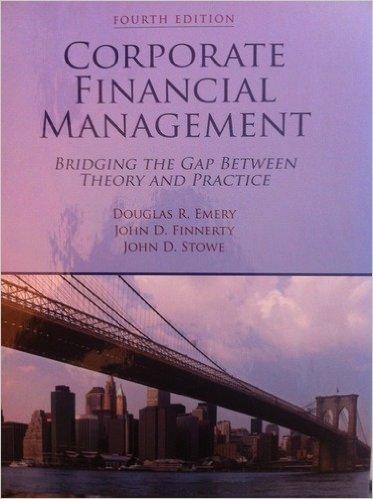Question
Estimating the riskfree rate when the government is not default free We have implicitly assumed in our discussion of risk free rates that the government
Estimating the riskfree rate when the government is not default free We have implicitly assumed in our discussion of risk free rates that the government is a default-free entity and that it issues long term bonds. There are a number of economies where one or both of these assumptions can be challenged. In some emerging market countries, where governments in the past have failed to meet their promised obligations, the government is not viewed as default free. There are many other markets where the government does not issue long term bonds, and the best that one can obtain is a short term government rate. There are three solutions to this problem. One is to bypass it entirely by doing the analysis in a different currency (such as the U.S. dollar) where a riskfree rate is easy to obtain. The other is to find the rate at which the largest and safest corporations in that country can borrow long term at in the local currency and reduce that rate by a small default premium (say 20 or 30 basis points) to arrive at a long term riskfree rate. The third solution exists only if there are long term forward contracts on the local currency.Since interest rate parity drives forward contract pricing, the long term local currency rate can be obtained from the price of the forward contract and the long term interest rate on the foreign currency.
- Real versus Nominal Riskfree Rates Real riskfree rates do not include a premium for expected inflation and should be used if the cash flows are estimated using a similar premise. In practice, it is a good idea to steer away from nominal cash flows and discount rates when inflation hits double digits. One solution is to use a different currency which is more stable; in high-inflation economies, it is common to do investment analyses and valuations in U.S. dollars. The other is to use real cash flows and discount rates. Obtaining real riskfree rates can be trivial if a inflation-protected government bond trades in the market. In the United States, for instance, the rate on inflation-linked bonds that were introduced in 1997 , is the real riskfree rate. Unfortunately, this option is generally unavailable in those high-inflation economies where the need to use real riskfree rates is the greatest. In those markets the real risk free rate has to be estimated indirectly. We would propose that the real risk free rate be set equal the the expected long term real growth rate of that economy. While this rate may be about 3% for the U.S. economy, it is likely to be higher for other economies such as Brazil and China.
Risk Premium
- Geometric versus Arithmetic Risk Premiums: Which is better? The conventional wisdom is that the arithmetic mean is the better estimate. This is true if (1) you consider each year to be a period (and the CAPM to be a one-period model) (2) annual returns in the stock and bond markets are serially uncorrelated As we move to longer time horizons, and as returns become more serially correlated (and empirical evidence suggests that they are), it is far better to use the geometric risk premium. In particular, when we use the risk premium to estimate the cost of equity to discount a cash flow in ten years, the single period in the CAPM is really ten years, and the appropriate returns are defined in geometric terms. In summary, the arithmetic mean is more appropriate to use if you are using the Treasury bill rate as your riskfree rate, have a short time horizon and want to estimate expected returns over that horizon. The geometric mean is more appropriate if you are using the Treasury bond rate as your riskfree rate, have a long time horizon and want to estimate the expected return over that long time horizon.
Step by Step Solution
There are 3 Steps involved in it
Step: 1

Get Instant Access to Expert-Tailored Solutions
See step-by-step solutions with expert insights and AI powered tools for academic success
Step: 2

Step: 3

Ace Your Homework with AI
Get the answers you need in no time with our AI-driven, step-by-step assistance
Get Started


